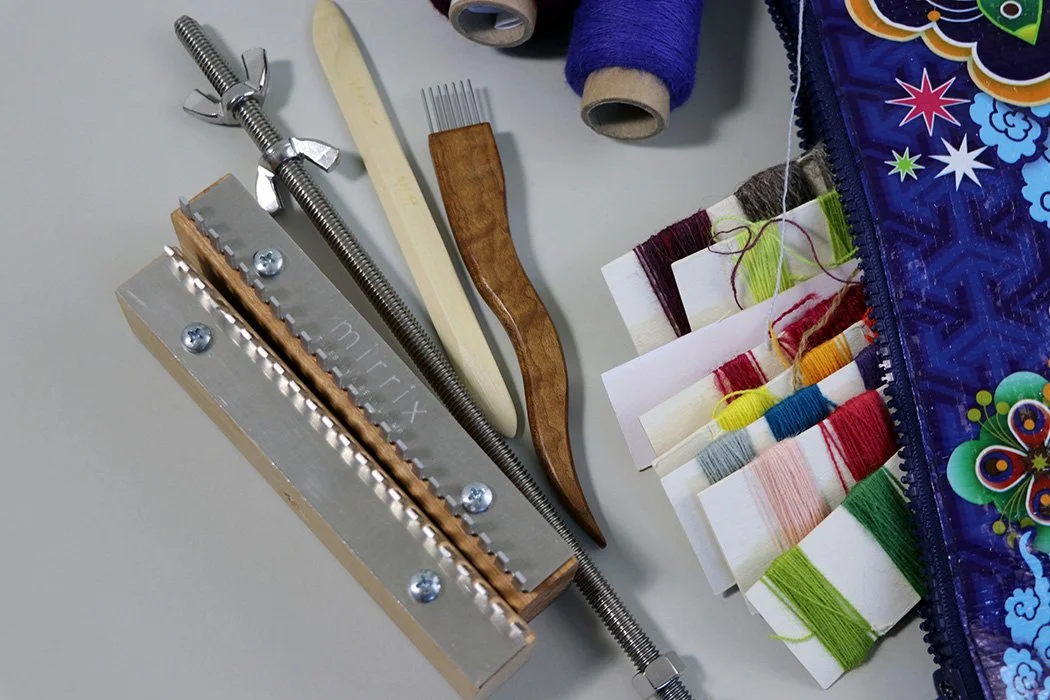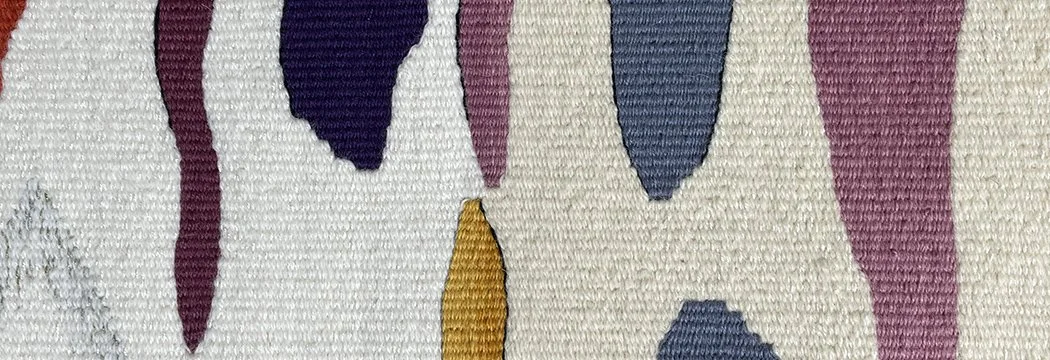It isn’t a common thing to say in the USA, that a tapestry falls from the loom. But that is the translation from other languages and I like it. One of you will remind me where I have heard this. I believe it is the French that say it, but please correct me if not!
I’ve started a new tapestry series and I am still so excited about weaving large tapestries again. I’m forging ahead with the second piece and hope to get it on the loom in the next couple weeks. Those of you who watched me weave wildflowers on Change the Shed know that I started the sampling in October of 2021 and the tapestry began on my rug loom in mid-November.
For me to have woven a piece like this in two and a half months is a bit astounding to me. You see, I work full time and tapestry is slow. It usually takes me a year to weave a larger piece. But I am determined to spend more time on the loom and so I have made choices this year to allow me to do that. To finish this piece in that time which included almost two weeks away from home visiting family, I just wove every day. Most days it was only an hour, but that adds up to 7 hours a week and that was enough. This piece was not complicated weaving and so I was able to roll right along fairly quickly. There were few decisions and it was a joy to see it grow so quickly.







